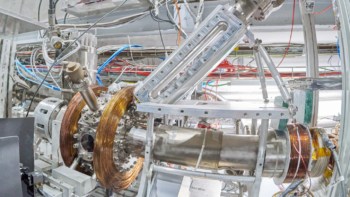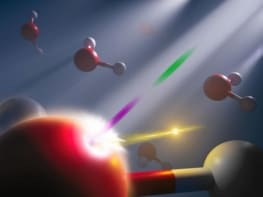
Citizen scientists have outperformed physicists in creating Bose–Einstein condensates (BECs) of ultracold atoms. That is the finding of an international team of scientists and social scientists, which ran the first-ever optimization challenge in which the public was able to create a BEC remotely by manipulating laser beams and magnetic fields. Optimization experts using state-of-the-art algorithms took a similar challenge and both groups created BECs containing more atoms than the physicists who had built the experiment – even though the physicists had months to perfect their techniques.
By studying the behaviour of the 600 citizen scientists who participated, the team has uncovered insights into what makes human problem solving unique. As well as providing hints for creating advanced algorithms based on human intuition, the study suggests how to exploit the best of human and artificial intelligence in the future.
The research was done by Jacob Sherson and colleagues at Aarhus University in Denmark, Ulm University in Germany and the University of Sussex in the UK. Sherson and some of his colleagues have been involved in the ScienceAtHome project, which develops games that use the brainpower of the general public to solve quantum science challenges. In 2016, they described how more than 10,000 players of one of these games – Quantum Moves –had efficiently optimized operations that could run a hypothetical quantum computer. “[With Quantum Moves], we documented that humans can contribute to solving complex challenges,” says Sherson. “With our current work we now take on the challenge of starting to answer how they contribute.”
Atom cloud
This latest research involves an experimental set-up in Aarhus, where rubidium-87 atoms were captured in a trap made of two laser beams and a magnetic field. The atoms were then cooled to form a BEC by lowering the intensity of the laser beams and magnetic field gradient. When the traps were turned off, the atom cloud was imaged to reveal the total number that had formed the BEC – which is a quantum state of matter that has a wide range of applications including quantum sensing and simulation.
Players from across the world were connected in real-time to Aarhus through an online cloud interface. Through this, an individual player could change the laser beam and magnetic field parameters, which were then turned into experimental sequences in the lab. Roughly 35 s later, the player received their result.
Perhaps unsurprisingly, optimization experts working with a highly effective optimization algorithm found an optimal solution, superior to the previous best, in about 100 iterations. For the citizen scientists, Sherson and colleagues built a user interface called the Alice Challenge that turned the problem into an interactive and engaging game. Over the course of two weeks, 7577 solutions were submitted and realized in the lab. And from this, players managed to create a BEC containing 2.6 million atoms, a new record for the experiment.
New ways of thinking
Sherson explains that the solutions differed markedly and were both distinct from previously known ways of generating BECs. Furthermore: “We took the solutions of both the [experts] and the citizen scientists and stretched and compressed them in duration,” he adds. “We found that they exhibited very different degrees of robustness, illustrating that it is useful to have ways of generating very different solutions.”
The social scientists in Sherson’s team were given the unique opportunity of analyzing how the citizen scientists individually and collectively searched for solutions within the real-world Alice Challenge. They found that in contrast to algorithms, which make small steps to iteratively improve on a current solution, humans adapt their search strategies according to how they are performing. Well-performing players make small changes to optimize their solution, whereas poorly performing players will often innovate and try something completely new. As the latter see success, they gradually adapt to the former’s strategy, and vice versa.
We and many other scholars believe that the future will lie much more in hybrid intelligence platforms: interfaces that optimally exploit the best of human and artificial intelligence
Jacob Sherson
Human intuition is shown to be both valuable and hard to replicate in algorithmic form. Sherson suggests that the study shows how future algorithms could take inspiration from how humans make intuitive jumps by identify patterns from very little data. He also sees the potential of combining the best of both worlds: “We and many other scholars believe that the future will lie much more in hybrid intelligence platforms: interfaces that optimally exploit the best of human and artificial intelligence”.

Computer gamers solve quantum problems
BEC expert Tobias Lausch from Technische Universität Kaiserslautern, who was not involved in the study, likes the approach and idea the researchers implemented in their experiment, though he feels “it is a pity that there was not enough data gathered to study all aspects of the human performance and had to focus only on the initial search behaviour”.
He agrees with Sherson that a hybrid approach to optimization is promising: “Most optimization strategies based on evolutionary algorithms randomly seed parameters,” he says “A citizen scientist in this sense is a very welcome seed.”
The team is now turning their attention to applying the results of the study by combining the large BEC with single atom manipulation in order to create a neutral atom quantum simulator, a precursor to a generic quantum computer.
The research is described in Proceedings of the National Academy of Sciences.



